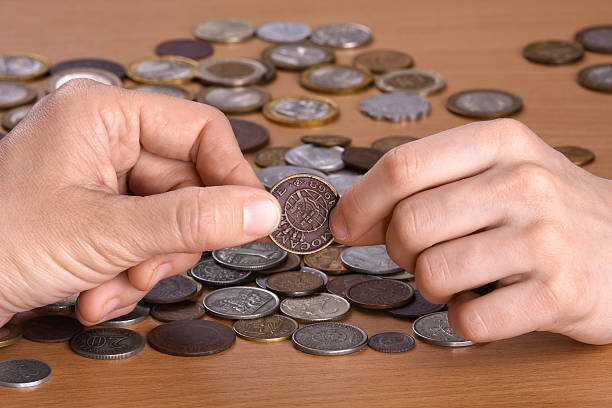Key Takeaways
- Challenge coins serve as meaningful tokens in diverse environments, helping build unity and pride across organizations.
- They celebrate achievements, recognize milestones, and create long-lasting bonds between group members.
- Tailored stories and innovative uses of challenge coins showcase their powerful impact on community building.
Roots of Challenge Coins in Modern Culture
The story of challenge coins begins with a tradition rooted in the armed forces, where coins were issued to honor acts of valor, commemorate significant missions, and foster a sense of unwavering camaraderie and unity. Over recent decades, however, challenge coins have evolved into much more than military artifacts—they have become cherished emblems of connection across countless groups and organizations. Today, it’s common to find law enforcement, fire departments, businesses, academic clubs, and even social organizations harnessing the power of these unique tokens.
The availability of companies like https://lonestarchallengecoins.com/ has made it easier than ever to design coins that speak directly to a group’s specific culture, interests, or milestones. By creating custom artwork, mottos, and symbols, these organizations imbue each coin with meaning that extends far beyond its material value. As communities adapt their rituals and deepen their collective identity with these coins, the enduring appeal reveals something important about human nature: people crave recognition and a tangible sign that they belong.
Creative Community-Building with Custom Coins
Innovative organizations are embracing challenge coins as a powerful tool for community building. Rather than simply distributing them, some groups use the coins as part of welcoming ceremonies, icebreakers, or games that foster interaction among members. Universities have developed traditions where freshmen receive coins bearing the school’s crest—a ritual that links new students to generations of alumni and sets the stage for lifelong pride. Other academic settings design coins for debate victories, volunteer service, or leadership achievements, helping students build both memories and relationships.
In local clubs and associations, challenge coins might be earned through service projects, successful fundraising drives, or by reaching significant milestones. Each coin becomes a piece of personal and collective history, often exchanged or displayed proudly. Even informal groups, such as gaming communities and book clubs, have joined the trend, using coins to signal belonging and recognize shared passions. This accessible approach makes the tradition inclusive, ensuring more people feel welcomed and valued from the very start.
Recognition and Reward: Beyond the Military
Motivation research is clear: people thrive when their contributions are recognized. But what makes challenge coins so impactful is their permanence. Unlike digital badges or fleeting applause, a coin is a tactile object that can be carried, displayed, or even passed down. Tangible recognition not only boosts morale at the moment but also has lasting effects on loyalty and performance.
For example, teachers who receive a challenge coin for supporting a colleague or launching a creative lesson plan often keep this memento close at hand. It serves as a daily reminder of being seen and appreciated. Within workplaces, employees who have received coins for their years of service, teamwork, or project success often share these stories with friends and new hires, thereby organically reinforcing the organization’s culture. As noted in The USA Leaders, these coins have become a powerful tool in corporate culture, symbolizing trust, accomplishment, and shared identity. They are not just keepsakes—they are constant signals that someone’s efforts matter. This enduring recognition helps build a sense of identity and pride that digital alternatives often fail to deliver. Over time, the coin becomes more than a reward—it becomes a symbol of belonging. Whether placed on a desk or carried in a pocket, it silently communicates value, purpose, and connection.
Corporate and Civic Adoption of Challenge Coins
What began as a tool for military and emergency services has found a home in corporate and civic life. Across industries, companies use challenge coins as rewards for achieving sales targets, implementing innovative solutions, or navigating challenging company transitions. At team retreats or corporate milestones, coins become visible representations of group achievement. These moments, immortalized in metal, strengthen employee commitment and help cultivate positive reputations both internally and externally.
City governments, nonprofit boards, and community organizations also use coins to mark years of service, celebrate local history, or honor volunteers. At public events, it’s not uncommon to see leaders placing coins into the hands of individuals who have demonstrated extraordinary dedication. These acts resonate throughout the community, inspiring future involvement and reinforcing shared values. A single coin can thus play a pivotal role in connecting people to causes and civic duty.
Unique Examples and Stories from Real Communities
The versatility of challenge coins is best seen in the stories and traditions that surround them. Many nonprofit organizations have created unique coins for events like building a new community center or surpassing a fundraising goal. Recipients display these coins at home or in their workplaces, making them conversation pieces and reminders of collective success. Sports teams, meanwhile, craft coins to celebrate championships, MVP awards, and even sportsmanship—turning a moment on the field into a memory that lasts.
In high-tech startups, leaders use custom coins to welcome new employees or reward creative problem-solving. Some teams establish rituals where new hires receive a coin from their manager during their first team lunch, thereby embedding them in the company’s culture from the outset. Employees frequently cite these coins as some of the most meaningful recognition they’ve received, reflecting the ability of a simple object to create unforgettable experiences and bonds.
Best Practices for Introducing Challenge Coins
- Engage group members in the design process to ensure coins feature relevant images, colors, and messages.
- Present coins at memorable ceremonies—such as annual dinners, kickoff meetings, family days, or anniversaries—to reinforce their value.
- Encourage coin recipients to share how or why they earned their coin. Storytelling turns coins into carriers of tradition for new members.
- Make coins a recurring part of the group’s recognition strategy, such as for each milestone or during regular member spotlights.
By emphasizing intentionality in both the coin’s design and its distribution, organizations can maximize emotional impact and inspire tradition. When people feel a sense of ownership over the story and ceremony, a simple token becomes a cherished legacy.
The Psychology of Tokens and Group Identity
The science is compelling: tokens like challenge coins help individuals remember positive moments and reinforce a sense of belonging. As highlighted in studies on achievement symbols, objects tied to recognition trigger motivation, loyalty, and gratitude. Individuals often place coins in prominent locations—on their work desk, in a display case, or even on a keychain—ensuring the memory and emotions associated with the coin are revisited regularly.
Not only do challenge coins make people feel valued, but they also help groups flourish by reinforcing a shared identity. They act as anchors during tough times and celebration points during milestones, making them invaluable to any organization or club looking to build lasting unity.
Future Trends in Community-Building Symbols
As organizations become more dispersed and work becomes increasingly remote, physical tokens like challenge coins bridge the growing divide by offering a tangible marker of community. Imagine a remote worker flashing a challenge coin in a video meeting—it’s a conversation starter and a silent affirmation of inclusion despite physical distance. The need for connectedness is timeless, and creative uses of these small tokens continue to gain traction across all types of groups.
Looking ahead, the challenge coin tradition shows no sign of fading. If anything, it’s becoming more relevant as communities seek new ways to spark pride, preserve legacy, and strengthen their human connections, both close by and far away. As technology accelerates communication, the coin serves as a physical reminder that relationships are built not just online, but through shared symbols, values, and meaningful stories.



